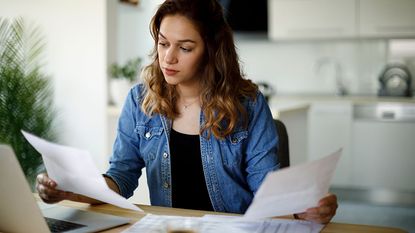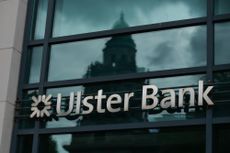Don’t miss 31 July ‘payment on account’ tax deadline
Many self-employed people have a second tax payment deadline. And the stakes are higher this year, as HMRC recently increased the interest charge on late payments to 7.5%.


Self-assessment taxpayers who need to make their second payment on account for the 2022/23 tax year have only a week to do so or face hefty new interest charges.
Workers who make payments on account must do so by midnight on 31 January and 31 July every year.
The deadline applies to all those who are self-employed unless they owe £1,000 or less (as this can be made in a single payment on the first return), or they have already paid more than 80% of the tax they owe.
Subscribe to MoneyWeek
Subscribe to MoneyWeek today and get your first six magazine issues absolutely FREE

Sign up to Money Morning
Don't miss the latest investment and personal finances news, market analysis, plus money-saving tips with our free twice-daily newsletter
Don't miss the latest investment and personal finances news, market analysis, plus money-saving tips with our free twice-daily newsletter
Sarah Coles, head of personal finance at the wealth manager Hargreaves Lansdown, said: “Many people are so focused on sorting out their paperwork on time that they then forget this part of the bill. You can end up penalised for underpaid tax – despite going through all the rigmarole of doing your tax return.”
WHAT IS PAYMENT ON ACCOUNT?
Many self-employed people are required to make two payments on account each year. HMRC works out an estimate for what your tax bill is likely to be, based on previous tax years, and splits this into two payments on account.
So on 31 January, not only will you have to pay your tax bill for the 2021-2022 tax year, you also have to pay your first payment on account for the 2022-2023 tax year. The second payment on account then needs to be paid by 31 July.
You can request for your payments on account to be lowered if you believe your income will fall and you will therefore be liable for a smaller tax bill.
The tax can be paid online using a debit or corporate credit card; or via bank transfer, direct debit or a cheque in the post – however, plan this in advance to avoid any transfers being received after the deadline.
For those who still receive paper statements from HMRC, it’s also possible to make the payment at your bank or building society.
PENALTY INTEREST RATE RISES
The amount of interest HMRC charges on income tax not paid on time was recently upped, making it more vital than ever to pay your outstanding tax by 31 July.
The new rate of 7.5% was introduced on 11 July, up from 7%.
Stevie Heafford, tax partner at the accountancy firm HW Fisher, said: “Late payment interest rose to 7.5% this month, making it even more important for individuals to pay their tax on time. If this deadline applies to you, you still have time to arrange your second payment, and if you don’t think you can make this payment, make sure to get in touch with HMRC to try to set up a Time to Pay arrangement.”
But there is a silver lining: the rate payable to you if HMRC overcharges has also gone up. The new rate of 4% means you could get a small boost should you be due compensation for having overpaid your bill.
The two rates have risen because they are linked to the Bank of England base rate, which last month rose to 5%.
Once your tax return has been completed, you’ll be able to see how accurate the payments on account were. If you paid too much, you can claim a refund, while if you have not paid enough, you can top it up to the required amount.
DO I HAVE TO FILE A SELF-ASSESSMENT TAX RETURN?
About 12 million people are expected to file a self-assessment tax return each year. While it is predominantly seen as something that self-employed workers have to do, there are many people in regular employment who are also required to file a tax return.
It largely comes down to whether you receive some form of income that is not taxed at the source. As a result, alongside the self-employed, those who receive an income from renting out property or who make large amounts of money from investments (which aren’t held in an ISA) will also have to file a return.
So too will those who need to pay capital gains tax after profiting from the sale of an asset, or who earn an income from abroad.
Other examples include people that earn more than £50,000 and need to repay some of the child benefit they have received, and higher or additional-rate taxpayers who want to claim extra tax relief on their pension contributions.
About 96% of people filing a tax return choose to do so online, while 4% submit a paper return.
REGISTERING TO FILE A SELF-ASSESSMENT TAX RETURN
You will need to register with HMRC in order to file a self-assessment tax return. This must be done by 5 October for the following tax year.
You can do this online through the Gov.uk website, after which you will be sent a unique taxpayer reference through the post. Activation details for the government’s Gateway platform will also be posted to you; the Gateway is used for filing an online tax return.
This process can take up to three weeks, so it’s a good idea to start the registration process as early as possible.
FILING YOUR SELF-ASSESSMENT TAX RETURN AND PAYING YOUR TAX BILL
You have until 31 January to file your self-assessment tax return and pay your tax bill, if you’re doing it online.
This deadline is for the previous tax year. So you have until 31 January 2023 to file your tax return and pay your bill for the 2021-2022 tax year.
Those who file their tax return by paper have to send it in by 31 October – although the deadline to pay any tax due is still 31 January.
HMRC points out that these payments can take a few days to go through, so it’s good advice to make the payment in advance of that deadline.
Once you have completed your tax return, and HMRC has told you how much tax you owe, you can then make the payment through your online banking service to the HMRC bank account, or by using your debit card or a corporate credit card. You can also make a payment from your bank or building society’s local branch, or by posting a cheque to HMRC.
It’s not possible to pay at the Post Office anymore.
THE PENALTIES FOR LATE TAX RETURNS
A £100 penalty fine will be levied if you are late in filing your tax return and paying your bill - with more fines after that if you fail to pay.
This penalty will be increased if you are more than three months late. You will also have to pay interest on the money owed.
However, HMRC has said it will not slap you with a penalty for 'honest' mistakes. It will accept certain excuses if you want to appeal against a penalty for a late tax return, including the death of a close relative, a spell in hospital, or if your computer fails.
If you are unable to pay, contact HMRC as soon as possible to see if a repayment plan can be put in place.
The High Income Child Benefit Charge
If you have made a mistake with your tax return, you can correct it yourself within 72 hours. This can be done through the Gateway platform if you file your return online, while those who do their return through the post can download a new form to fill in. The word “amendment” needs to be written on every page.
After this date, you’ll need to write to HMRC to outline any errors made. You must make clear why you think the wrong amount of tax has been paid and how much you either owe or should be refunded.
You are able to claim refunds up to four years after a tax year ends.
EXPENSES IF YOU ARE SELF-EMPLOYED
You may be able to claim certain expenses when filing your self-assessment tax return, which will lower the size of your tax bill.
These could include office costs, such as for stationery or computer equipment, or travel costs, such as train fares.
Crucially, these need to be expenses that are the result of you carrying out your job ‒ you can’t claim for a laptop which you are actually using for leisure purposes, for example.
You may also be able to claim towards a portion of certain household expenses, should you work from home, such as your energy bill. You cannot deduct the entire bill ‒ instead you will be required to work out what portion of your energy use is the result of your work.
An easier option is the simplified expenses scheme, which allows self-employed people to claim a flat rate. This is determined by the number of hours they work from home each month and ranges from £10 to £26 a month. You will need to work at least 25 hours a month from home.
THE HIGH INCOME CHILD BENEFIT CHARGE
One reason for some people needing to file a self-assessment tax return is so they can pay the High Income Child Benefit Charge.
The charge is levied against people who earn more than £50,000 a year, and acts as a taper, gradually claiming back the child benefit paid to such high earners.
For every £100 earned between £50,000 and £60,000, 1% of the child benefit you have received must be repaid through the charge. Once you earn £60,000, the charge means you will have to pay back all of the child benefit you have received.
The partner who earns the highest amount is responsible for paying the High Income Child Benefit Charge, even if they are not the one that receives the child benefit payments.
PAYING YOUR SELF-ASSESSMENT TAX BILL
You have a few different payment options for clearing your tax bill.
Many taxpayers opt to pay the bill in full through a single lump sum payment, but there are various different ways in which you can do that. A single payment could be made using a debit card, for example, while you can also use a corporate debit or credit card, though this will incur a fee.
You can instead opt to pay through a bank transfer over the phone or online, or by making the payment through your bank or building society branch. There is also the option of paying by cheque, though it’s worth bearing in mind the additional time pressures involved here. You will need to post the cheque in time to not only arrive with the taxman in advance of the tax deadline, but for the payment to go through too.
Some taxpayers who are unable to pay the bill off in full can look to set up a ‘Time to Pay’ arrangement. For some this can be done online, but in other cases you may need to discuss your needs with HMRC staff directly. As the name suggests, Time to Pay allows you to pay the bill off over a longer period, in instalments.
HMRC will look into your financial arrangements to work out how much money you have left each month after the essentials, such as food and utility bills, have been paid. It can then calculate what you can afford to pay towards the bill.
For some taxpayers, the bill can be paid through their tax code. This is not an option for everyone ‒ you can only do this if you owe less than £3,000 and already pay tax through pay as you earn (PAYE), for example because you are employed in some capacity rather than entirely self employed. You will also have to have submitted either a paper tax return by 31 October or an online tax return by 30 December.
Finally, it’s possible to make regular payments towards the next year’s tax bill by putting a ‘budget payment plan’ in place. With such a plan, you make payments on either a weekly or monthly basis, which are directed towards your next bill.
It means that when you actually file your tax return, you can then either claim a refund or top up the payments to clear the amount you owe.
With all of your self assessment tax return payment methods, it’s important to note down your UTR. You will need to include this as a reference, for example when making an online payment, or by writing it on the back of the cheque. This means that HMRC is able to easily work out which tax bill the money is meant to go towards.
Join us at the MoneyWeek Summit on 29.09.2023 at etc.venues St Paul's, London.
John Fitzsimons has been writing about finance since 2007, and is a former editor of Mortgage Solutions and loveMONEY. Since going freelance in 2016 he has written for publications including The Sunday Times, The Mirror, The Sun, The Daily Mail and Forbes, and is committed to helping readers make more informed decisions about their money.
-
 Stop inheritance tax perk on pensions, says IFS
Stop inheritance tax perk on pensions, says IFSThe government could raise billions of pounds in revenue by closing inheritance tax loopholes, such as on pensions and AIM shares. Is your pension at risk?
By Ruth Emery Published
-
 Revealed: Best buy-to-let property hotspots in the UK
Revealed: Best buy-to-let property hotspots in the UKLooking for the best buy-to-let property locations in the UK? We reveal the top 10 postcodes with the strongest rental returns
By Oojal Dhanjal Published
-
 Act now to bag NatWest-owned Ulster Bank's 5.2% easy access savings account
Act now to bag NatWest-owned Ulster Bank's 5.2% easy access savings accountUlster Bank is offering savers the chance to earn 5.2% on their cash savings, but you need to act fast as easy access rates are falling. We have all the details
By Marc Shoffman Last updated
-
 Moneybox raises market-leading cash ISA to 5%
Moneybox raises market-leading cash ISA to 5%Savings and investing app MoneyBox has boosted the rate on its cash ISA again, hiking it from 4.75% to 5% making it one of top rates. We have all the details.
By Ruth Emery Published
-
 October NS&I Premium Bonds winners - check now to see what you won
October NS&I Premium Bonds winners - check now to see what you wonNS&I Premium Bonds holders can check now to see if they have won a prize this month. We explain how to check your premium bonds
By Kalpana Fitzpatrick Published
-
 October’s NS&I Premium Bond winners revealed - have you scooped £1 million?
October’s NS&I Premium Bond winners revealed - have you scooped £1 million?Two lucky NS&I Premium Bond winners are now millionaires this October. Find out here you are one of them
By Kalpana Fitzpatrick Published
-
 The best packaged bank accounts
The best packaged bank accountsAdvice Packaged bank accounts can offer great value with useful additional perks – but get it wrong and you could be out of pocket
By Tom Higgins Last updated
-
 Bank of Baroda closes doors to UK retail banking
Bank of Baroda closes doors to UK retail bankingAfter almost 70 years of operating in the UK, one of India’s largest bank is shutting up shop in the UK retail banking market. We explain everything you need to know if you have savings or a current account with Bank of Baroda
By Vaishali Varu Published
-
 The best options to earn cashback on spending
The best options to earn cashback on spendingFrom credit cards and current accounts to cashback websites, there are plenty of ways to earn cashback on the money you spend.
By John Fitzsimons Published
-
 Should you retire abroad?
Should you retire abroad?Check the regulations governing pension savings carefully before you decide to retire abroad.
By David Prosser Published